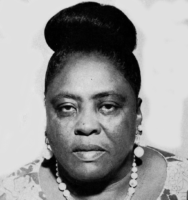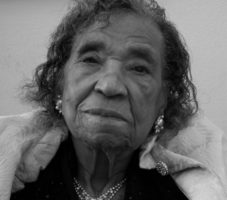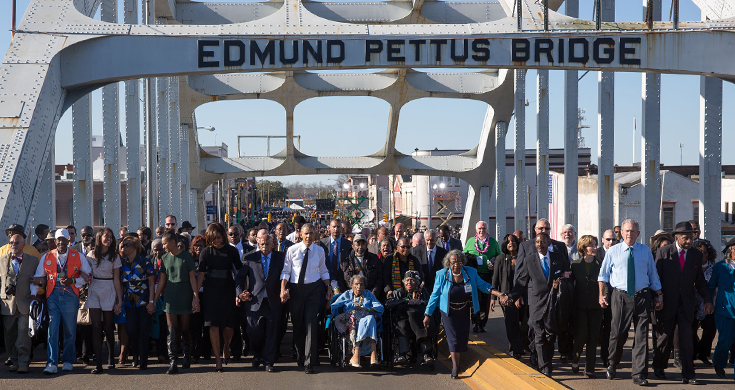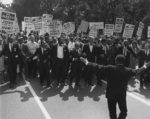Martin Luther King, Jr. is often the first name that comes to mind when referring to the civil rights movement of the 60s, and for good reason, as he was the eloquent spokesman and effective leader during this crucial time in history. But there were hundreds of black Americans who risked their lives and welfare to fight against injustice and demand equal rights for their neighbors, their children, and future generations. And though their efforts were powerfully effective, students today may be unaware of their names or their contributions.
Many of these unsung heroes were young when they took action to reform the country, and their stories can inspire today’s students who want to change injustices in their world.
The Greensboro Four—Standing Up by Sitting Down
If your kids ever complain that they lack the power to change the world, you can tell them the story of the Greensboro Four. Inspired by the non-violent protests of Mohandas Gandhi, Ezell Blair Jr., David Richmond, Franklin McCain, and Joseph McNeil sat at a Woolworth’s segregated lunch counter on February 1, 1960, in Greensboro, North Carolina, to protest its “whites-only” policy. “We can’t serve you,” the waitress told them. “I certainly wasn’t afraid,” Franklin McCain, told NPR in an interview years later. “And I wasn’t afraid because I was too angry to be afraid.”
But the college students had reason to be afraid, as protesters during this time were often humiliated, arrested, beaten, or killed. The manager told them to leave and called the police, but the four men stayed at the counter until it closed that evening. They returned the following day with fifteen more students. Just days later, 300 students had joined their continuing protest. The press coverage they received resulted in young protesters staging sit-ins across the country at segregated restaurants, libraries, beaches, and hotels. Many were arrested and even attacked for their peaceful protests, but the publicity brought more attention to the issue. Soon restaurants and other facilities ended their unfair segregation policies. And in July, six months after the “Greensboro Four” protest, Woolworth integrated its lunch counter in North Carolina.
Fannie Lou Hamer—Sacrificing Everything to Vote

Born to sharecroppers in 1917, Fannie Lou Hamer had to drop out of school at age 12 to work in the fields as her family struggled with hunger and poverty. As an adult, she became committed to civil rights. In August of 1962, she attempted to register to vote. To do so, she was given a literacy test and required to write out the Constitution of Mississippi. When she returned to her home, her landlord and employer on the plantation met her at the door to demand that she withdraw her application. When she refused, saying “I didn’t go down there to register for [you]; I went down there to register for myself,” he fired her and her husband and evicted them from her home of twenty years.
But her activism continued and the following year, while on a bus with a group from the Southern Christian Leadership Conference (SCLC), she was arrested without cause along with a small group of civil rights activists and severely beaten while in jail. “And it wasn’t too long before three white men came to my cell,” Hamer later recalled, and one of them “said, ‘We’re going to make you wish you was dead.’” Hamer barely survived the beating and suffered lifelong damage to her eyes, legs, and kidneys. She was not deterred, however, and continued to fight for justice all of her life. She worked with the Student Nonviolent Coordinating Committee (SNCC) and went on to co-found the Mississippi Freedom Democratic Party (MFDP), which she represented by testifying before the Credentials Committee. “Is this America, the land of the free and the home of the brave,” she boldly asked the committee, “where we have to sleep with our telephones off the hooks because our lives be threatened daily because we want to live as decent human beings, in America?”
In addition to fighting against injustice, Hamer did much to improve the lives of people living in poverty, including founding charitable organizations and advocating on behalf of the disenfranchised. When she died in 1977, hundreds of people came to her funeral. “No one in America has not been influenced or inspired by Mrs. Hamer,” said Andrew Young, the United States delegate to the United Nations, who spoke at her memorial service.
Amelia Boynton Robinson—Marching for Voting Rights

Amelia Boynton Robinson gained recent recognition after the 2014 movie Selma, but her pioneering activism began well before the 1965 march. She co-founded the Dallas County Voters League in 1933 and held black voter registration drives with her husband from the ‘30s into the ‘60s. In 1964, she became the first black woman to run for congress, earning 10 percent of the vote—particularly impressive since less than one percent of the black population in that area had been able to register to vote at the time. “I was the only woman, black, white, blue, or whatnot ever to run,” she told Congresswoman Terri A. Sewell in 2015.
In 1965, she invited Martin Luther King Jr. and the Southern Christian Leadership Conference to Selma, where together they planned the “Selma to Montgomery March” to bring attention to racist policies that infringed on black Americans’ right to vote. She even opened her home to the organizers to use as a headquarters. More than 600 protesters participated in the pivotal march, which became known as “Bloody Sunday” because of the violence that followed. State troopers lined up at the other end of the bridge and met the marchers with clubs and teargas. “As I stepped aside from the trooper’s club, I felt a blow on my arm that could have injured me permanently had it been on my head,” Boynton Robinson wrote in her book, Bridge Across Jordan. “Another blow by a trooper as I was gasping for breath knocked me to the ground and there I lay unconscious.” She was hospitalized, and the teargas they sprayed in her face left her with permanent damage. “Many months after this march, I went to a specialist for throat problems,” she wrote. “I was told that my esophagus was permanently seared and scarred by the teargas.” Despite her injuries, Boynton Robinson fearlessly participated in the next two Selma marches.
Five months later, in response to the marches, Congress passed the Voting Rights Act of 1965 in an attempt to protect minority voters. President Lyndon B. Johnson invited her to the White House to see him sign the historic bill. And amazingly, 50 years later at age 103, Amelia Boynton Robinson crossed that bridge again with the country’s first black president to commemorate the first march. “We honor those who walked so we could run,” President Obama said in his remarks at the 50th anniversary of the march. “We must run so our children soar.”
Septima Poinsette Clark—Removing Inequities for Teachers
Septima Poinsette Clark learned the value of having an education from her parents. Her mother was from Haiti, and her father was born into slavery. With their support and encouragement, she eventually earned the qualifications to become a teacher, but discovered that the Charleston schools where she lived would not hire black teachers. So she found a teaching job outside of Charleston on South Carolina’s Johns Island. She soon became interested in civil rights and joined the NAACP to advocate for black teachers. She organized a petition, for which she succeeded in getting signatures from three-fourths of the community. The following year, Charleston removed the ban on black teachers.
Then Clark began advocating for equal salaries for black teachers, assisting attorney Thurgood Marshall and the NAACP in a federal court case in Charleston, which resulted in a new salary system based on exam scores and not on race. But like so many of her time, Clark paid a high price for her work. Because of her ties with the NAACP and her continued work to advance civil rights, she was eventually fired from her teaching job. Undeterred, she began teaching at Tennessee’s Highlander Folk School, which trained and provided education for civil rights organizers. The state of Tennessee eventually revoked the school’s charter and arrested Clark and the other teachers, but not before her classes “had schooled thousands of students in basic literacy and civil rights, producing savvy new voters and changing the course of the Civil Rights movement,” according to Time Magazine. Historians say that Clark’s passion and advocacy in the education arena helped to fuel the general civil rights movement. “I believe unconditionally in the ability of people to respond when they are told the truth,” said Clark. “We need to be taught to study rather than believe, to inquire rather than to affirm.”
[Tweet ” “We need to be taught to study rather than believe, to inquire rather than to affirm.” -S. Clark”]
Recently, following the mass school shooting in Parkland, Florida, many students have begun protests of their own in hopes of making their schools safer. These students and others can learn from the heroes of the past that ordinary people can make significant changes in their world by protesting peacefully with steadfast determination and patient persistence.
Image credits:
Fannie Lou Hamer: Courtesy of the Mississippi Department of Archives and History. (modified by Coffee) [CC0], via Wikimedia Commons
Amelia Boynton Robinson: By Jamelle Bouie from Washington D.C., United States (selma survivor) [CC BY-SA 2.0 (https://creativecommons.org/licenses/by-sa/2.0)], via Wikimedia Commons






































